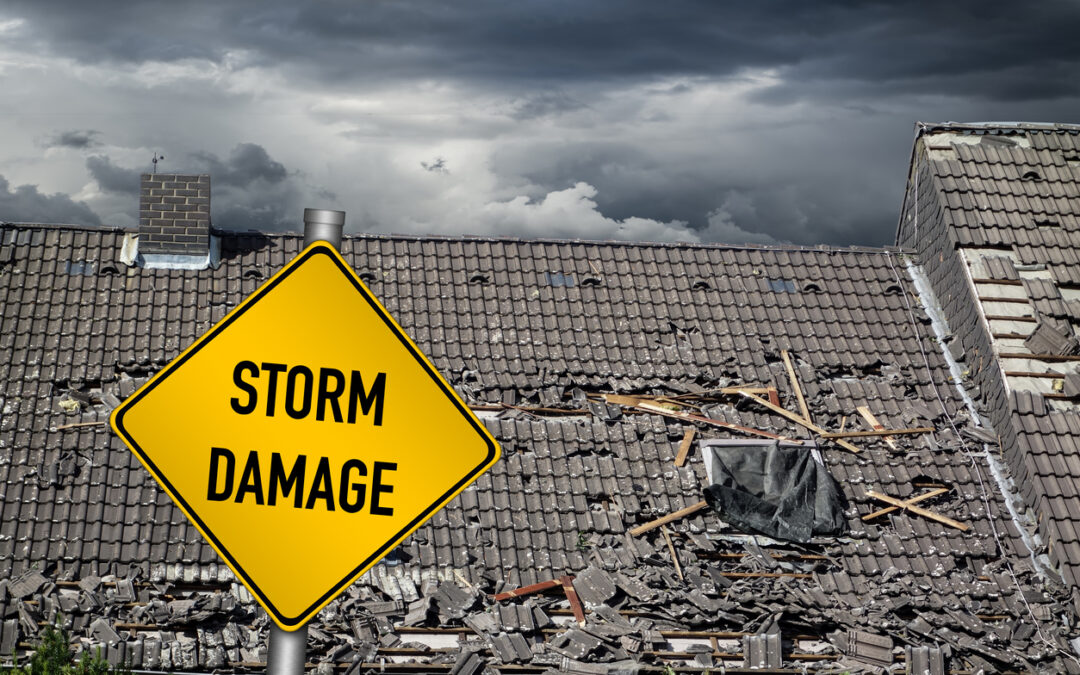Our Houston area wind, hail, and rainstorms have the potential to cause significant damage to our roofs. As a homeowner, it’s essential to know how to spot roof damage after a storm in order to address any issues promptly and prevent further deterioration.
Here are some suggestions:
Before climbing up on the roof, start by inspecting your property from the ground. Look for any visible signs of damage such as missing or displaced shingles, bent or dented metal panels, or debris scattered around the yard that might have come from the roof.
Inside your home, inspect the ceilings and walls for water stains or discoloration. Water stains are a clear indication of roof leaks, and their presence suggests that immediate attention is required to prevent further water damage and mold growth.
If it’s safe to do so, conduct a close-up inspection of your roof. Check for any missing, cracked, or damaged shingles. High winds and hail during summer storms can cause shingles to lift, crack, or tear, leaving the underlying roof structure exposed to the elements.
Pay close attention to the flashing around chimneys, vents, and skylights, as well as the seals around them. Damaged flashing and seals can result in water seepage and leaks, so any signs of wear or separation should be addressed promptly.
On asphalt shingle roofs, look for granule loss. The protective granules on shingles shield them from the sun’s UV rays and provide weather resistance. If you notice excessive granule loss in gutters or on the ground, it may indicate the need for roof repair or replacement.
If your roof is made of metal, check for dents caused by hail or debris impact. Even small dents can compromise the roof’s integrity and should be addressed to prevent further damage.
Clean out your gutters and downspouts and check for any granules, pieces of shingles, or debris. If you find an unusual amount of roofing materials in your gutters, it might be a sign of roof damage.
From the ground, look for any noticeable sagging or unevenness in the roof’s structure. A sagging roof may indicate structural damage and should be inspected by a professional immediately.
If accessible, inspect your attic after a storm. Look for signs of moisture, such as water stains, damp insulation, or a musty odor. Any signs of water intrusion in the attic may suggest roof damage.
If you are unsure about the extent of the damage or do not feel comfortable conducting a roof inspection yourself, it is best to seek assistance from a professional roofing contractor like Royal Crown Roofing to properly assess and address any storm-related damage. Remember, a well-maintained roof is essential for the safety and security of your home and family. Contact Royal Crown Roofing for your roofing needs.




